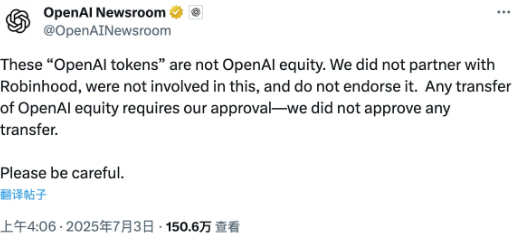I. Industry Risk Analysis
(1) Policy Risk
The uncertainty during the policy – making period may cause the technical standards or environmental protection requirements for lightweight wheels to fluctuate directionally, resulting in a misalignment between R & D investment and future policies. During the implementation phase, if strict carbon – emission control or material restriction standards are imposed, enterprises need to bear the high compliance costs of process transformation. Moreover, inconsistent implementation scales across regions may lead to regional market barriers. After entering the evaluation and adjustment period, the reduction of new – energy vehicle subsidies or the revision of lightweight indicators may render the previous production capacity planning ineffective. During the policy – abolition window period, the industry may fall into a dilemma in choosing the technical route. For example, a sudden change in the policy support for aluminum alloy and carbon – fiber materials will directly affect the supply – chain layout and the stability of customer orders.
(2) Economic Risk
Currently, the lightweight wheel industry faces multiple risks under the economic cycle fluctuations. During the economic expansion period, the surge in automobile consumption demand drives the industry’s expansion. However, with the arrival of the recession period, the cost – cutting pressure of vehicle manufacturers is transmitted to the upstream. The order volume declines and the payment cycle is extended. Coupled with the sharp fluctuations of raw – material prices such as aluminum/magnesium alloy following the commodity cycle, the profit margin is squeezed. During the credit – tightening cycle, the financing cost of small and medium – sized enterprises rises, restricting equipment upgrades and R & D investment, making it difficult to meet the iterative requirements of new – energy vehicles for wheel lightweight technology. Meanwhile, the global economic weakness hinders the expansion into overseas markets. In addition, the over – capacity in the domestic market intensifies price competition. The low entry barrier of the industry leads to fierce competition between new entrants and existing enterprises, increasing the survival pressure on start – up companies.
(3) Social Risk
There is a cognitive gap among young consumers regarding the environmental attributes and technological premium of lightweight wheels. Generation Z pursues low – carbon products but questions the “pseudo – technology” of excessive packaging, while middle – aged users focus more on the basic performance – to – price ratio. The policy – driven trend of “replacing steel with aluminum” conflicts with the path dependence of users in the sinking market on traditional steel wheels. Entrepreneurs face a mismatch in the social acceptance cycle of new and old technological route iterations and need to deal with the supply – chain elasticity risk caused by the irrational expectations of new consumer groups for the “fast – fashionization” of industrial products.
(4) Legal Risk
In the lightweight wheel industry, the legal risks faced by entrepreneurs are mainly concentrated on compliance and liability boundaries. In the production process, enterprises must strictly comply with national mandatory standards such as material strength and fatigue resistance. If there is fraud in testing or sub – standard processes, product recalls and lawsuits may be triggered. The independently developed patented technology may lead to infringement disputes due to plagiarism by competitors, but the rights – protection cycle is long and the compensation determination is vague. In the international market, regional regulations such as the EU’s carbon – emission certification and the US DOT standard are frequently updated. Export enterprises are prone to suffer from customs seizures or high fines due to delayed certification. In the domestic market, if data such as “30% weight reduction” are promoted without third – party testing endorsement, it may constitute false advertising and face penalties from market regulatory authorities.
II. Entrepreneurship Guide
(1) Suggestions for Entrepreneurship Opportunities
Focus on the new – energy vehicle and high – end modified vehicle markets. Develop high – performance lightweight wheels through material innovation (such as carbon – fiber composites and magnesium – aluminum alloys) and structural optimization technologies to meet the needs of new – energy vehicles for extended range and the performance requirements of modified vehicles. Rely on the development of intelligent molds and the innovation of precision casting processes to reduce product weight while maintaining structural strength. Focus on breaking through the cost – performance bottleneck of mainstream 12 – 18 – inch wheels. At the channel end, cooperate with battery manufacturers to create a lightweight solution package for new – energy vehicles, and simultaneously layout cross – border e – commerce platforms to explore the aftermarket for modified vehicles in North America and Europe. Establish a flexible production line to provide small – batch customization services. Launch co – branded limited – edition products combining lightweight design with aesthetics for high – end players to form differentiated competitiveness.
(2) Suggestions for Entrepreneurship Resources
Focus on technology R & D and supply – chain integration. First, cooperate with university material laboratories to obtain support for optimizing aluminum alloy/magnesium alloy formulas. Cooperate with precision casting factories through equipment leasing or contract – manufacturing models to reduce heavy – asset investment, and strive for subsidies from local government funds for new – energy vehicle supporting industries. Lock in the secondary – supplier qualifications of more than 3 regional new – energy vehicle manufacturers through strategic cooperation. At the same time, build a lightweight parameter database with third – party testing and certification institutions, and obtain payment – term support from raw – material suppliers through order pledge. Form a sales team with an automotive engineering background. Focus on breaking into the aftermarket modification channels of vehicle manufacturers in the Yangtze River Delta and the Pearl River Delta. Establish a data – verification closed – loop through small – batch customized production.
(3) Suggestions for Entrepreneurship Teams
It is recommended to first form a core technical team with a background in materials science and engineering manufacturing to ensure continuous innovation in lightweight material R & D and production processes. At the same time, recruit market operation talents with channel resources in the automotive industry and supply – chain management experience in vehicle manufacturers. Allocate project leaders familiar with the IATF 16949 quality system and the access standards of new – energy vehicle manufacturers. Bind key technical backbones through a dynamic equity distribution mechanism, and establish a flexible cooperation model with university material laboratories and the technical departments of vehicle manufacturers to maintain the team’s rapid iteration ability in the fields of carbon – fiber/magnesium – alloy application, precision casting processes, and intelligent detection equipment.
(4) Suggestions for Entrepreneurship Risks
First, choose proven aluminum – magnesium alloy materials and mature processes to reduce technical risks. Lock in long – term supply agreements for core raw materials to hedge against price fluctuations. Cooperate with scientific research institutions to conduct technological research and build a patent moat. For the customized development according to the lightweight needs of new – energy vehicle manufacturers, obtain the TS 16949 system certification and complete mandatory tests such as bench tests and salt – spray tests. It is recommended to adopt the OEM contract – manufacturing model to reduce heavy – asset investment and establish a flexible supply – chain system based on order – based production. Plan ahead for the EU REACH regulation and the US DOT certification. Receive 30% advance payment through the dealer channel to ensure cash flow, and use the industrial Internet to monitor the yield rate of production lines in real – time.





